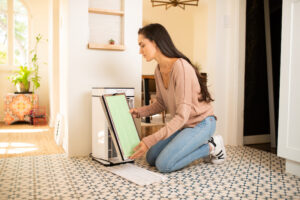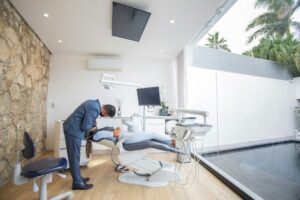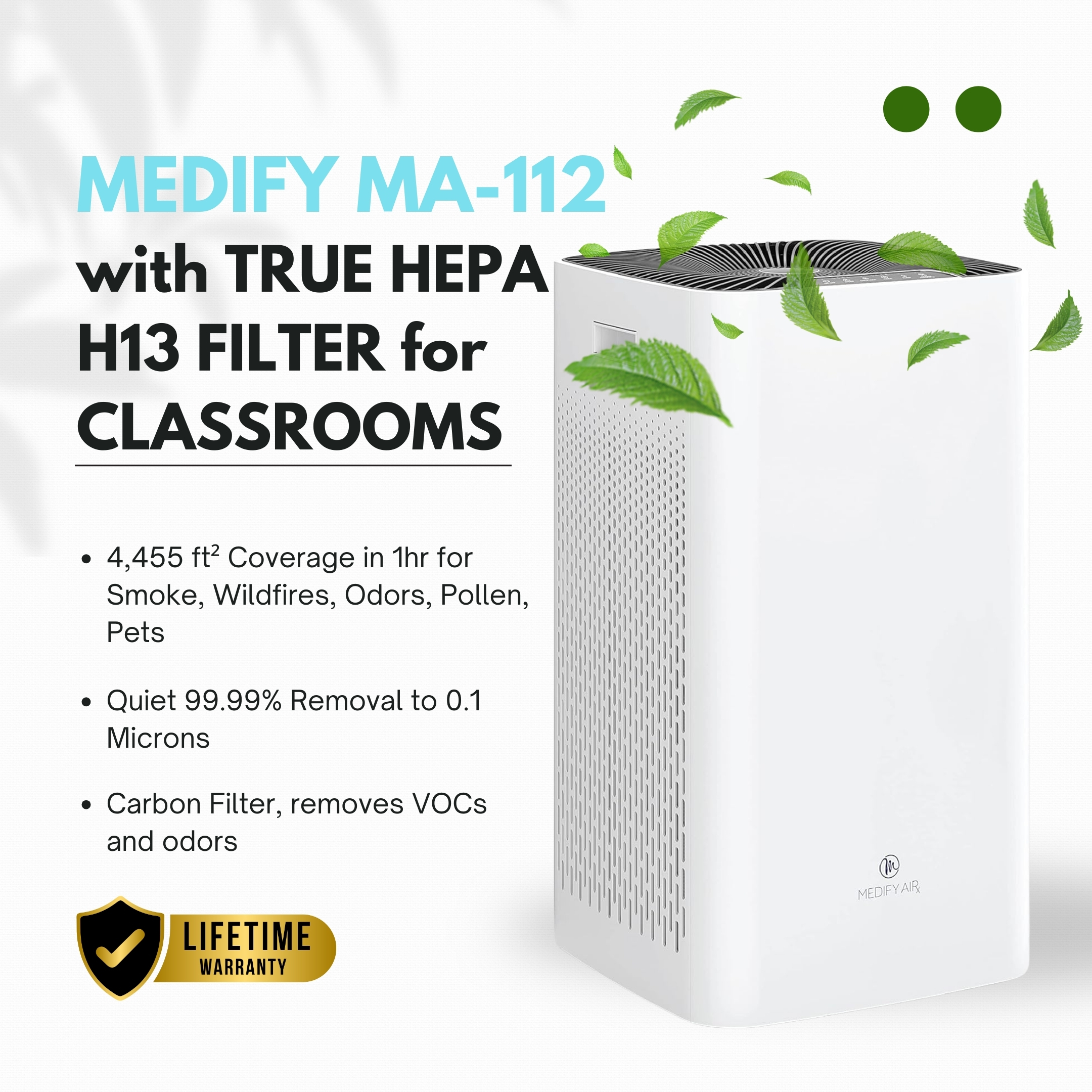Maximizing Classroom Air Quality: A Guide to Utilizing Federal Funding and Implementing HEPA-13/14 Air Purifiers for Schools & Classrooms

As we approach the end of 2024, the urgency to maximize federal COVID funding for improving indoor air quality in schools has become more critical than ever. With only three to six months remaining before the expiration of federal funding from programs like ESSER 3 and the American Rescue Plan, schools must act swiftly to take full advantage of these financial resources. Stephen Fontaine, an expert from IAQ Solutions & Consulting Inc., highlights the importance of utilizing these funds to ensure a healthier learning environment for students and staff.
Maximizing Federal COVID Funding: A Window of Opportunity for Schools
The availability of these funds presents a once-in-a-lifetime opportunity for schools to invest in long-term solutions that can significantly improve indoor air quality. However, much of the allocated funding remains unspent, leaving educational institutions at risk of missing out on crucial improvements that could protect the health and well-being of their communities. Fontaine stresses the importance of moving quickly, not only to secure the necessary air purification equipment but also to ensure these solutions are properly implemented before the window of funding closes.
A key area where this funding can make a real difference is through the purchase and installation of standalone HEPA-13 or HEPA-14 air purifiers. These devices, when appropriately matched to classroom sizes and other spaces within the school, offer an immediate solution for improving air quality, reducing the spread of airborne pathogens, and meeting CDC recommendations for 5 clean air exchanges per hour.
School administrators and facilities managers must recognize the potential benefits of investing now in proven solutions like air purification systems. Reach out to Steve Fontaine for a free consultation. By strategically using remaining federal funds, schools can not only meet current public health challenges but also create a healthier, safer indoor environment that will continue to benefit future generations of students long after the funding period ends.
Why HEPA-13 Air Purifiers Are Essential for Classroom Air Quality
Improving indoor air quality in schools has become a priority in recent years, especially as health experts highlight the importance of reducing the spread of airborne pathogens like COVID-19. HEPA-13 & HEPA-14 air purifiers have emerged as a critical component in this effort, offering an effective solution for classrooms, where large groups of students spend extended periods in enclosed spaces. Stephen Fontaine, from Indoor Air Quality Solutions and Consulting Inc., emphasizes that while HVAC systems play a role in ventilation, standalone HEPA-13 or 14 air purifiers are uniquely designed to capture airborne particles that HVAC systems may miss.
Here’s why HEPA-13 and HEPA-14 air purifiers are essential for classroom air quality:
- Capturing Fine Particles and Pollutants
HEPA-13 filters are specifically designed to capture at least 99.9% of airborne particles as small as 0.1 microns, while HEPA-14 filters go even further, capturing 99.99% of these particles. These include:- Viruses and bacteria – such as those responsible for the flu, colds, and COVID-19.
- Allergens – like pollen, dust mites, and pet dander, which can impact students with allergies or asthma.
- Particulate matter – such as mold spores, smoke, and other environmental pollutants that affect air quality.
- Supplementing HVAC Systems
While HVAC systems help with ventilation by circulating fresh air, they often lack the capability to filter out fine particles in the way that HEPA-filtered purifiers can. HEPA-13 / 14 air purifiers:- Provide an additional layer of defense against airborne contaminants.
- Operate independently, ensuring constant filtration even when HVAC systems aren’t running at full capacity.
- Help ensure that indoor air meets or exceeds recommended health standards for air exchanges and cleanliness.
- Aligning with CDC Guidelines for Clean Air
The CDC has recommended achieving five clean air exchanges per hour in indoor spaces to minimize the risk of airborne transmission of viruses. HEPA-13 and HEPA-14 air purifiers can help schools meet this target by:- Continuously filtering and cleaning the air in classrooms, ensuring it stays as fresh and pollutant-free as possible.
- Reducing the reliance on HVAC systems alone, which may not be able to meet the clean air exchange threshold on their own.
- Portable and Flexible for Any Space
One of the key advantages of HEPA-13/14 air purifiers is their portability. Unlike large HVAC systems, which require costly upgrades or retrofits, HEPA purifiers:- Can be easily moved between classrooms, libraries, and common areas, ensuring flexible use in high-traffic or high-risk areas.
- Provide an immediate improvement in air quality without needing extensive installation or alterations to existing school infrastructure.
- Protecting Long-Term Health and Well-Being
Investing in HEPA-13 or 14 air purifiers isn’t just about short-term protection during a pandemic; it’s about creating healthier learning environments for the long run. By reducing the levels of airborne contaminants, schools can:- Lower the risk of respiratory issues and allergies among students and staff.
- Promote better focus, attendance, and overall well-being by ensuring cleaner air in classrooms.
As schools consider how best to use their remaining COVID-related funding, standalone HEPA-13 or 14 air purifiers should be a top priority. These devices offer an immediate, tangible improvement to indoor air quality that can help safeguard the health of everyone in the school community—now and in the future.
The Importance of Meeting CDC’s Clean Air Exchange Guidelines
In May 2023, the Centers for Disease Control and Prevention (CDC) released updated guidance on indoor air quality, emphasizing the critical need for achieving at least five clean air exchanges per hour in indoor spaces like classrooms. This guideline is particularly important for schools, where students, teachers, and staff spend long hours in shared environments. Stephen Fontaine from Indoor Air Quality Solutions and Consulting Inc. highlights how meeting these air exchange standards is key to reducing the spread of airborne diseases and ensuring a healthier learning atmosphere.
Here’s why adhering to the CDC’s clean air exchange guidelines is so crucial for schools:
- Reducing the Spread of Airborne Pathogens
Airborne viruses, like COVID-19, can linger in the air for hours in poorly ventilated spaces. Achieving five clean air exchanges per hour helps to:- Remove contaminated air and replace it with cleaner, filtered air.
- Significantly reduce the risk of transmission of viruses, including common illnesses like colds and the flu.
- Maintain consistent air quality throughout the day, especially during peak times when classrooms are full.
- Ensuring Safer Indoor Environments
Meeting the CDC’s clean air guidelines is not just about preventing disease; it’s also about overall safety and comfort in indoor spaces. Proper air exchanges:- Help control indoor humidity levels, preventing conditions like mold growth, which can trigger allergies and asthma in sensitive individuals.
- Remove volatile organic compounds (VOCs) and other pollutants that can be harmful, especially in environments where students spend several hours daily.
- Promote healthier breathing conditions, reducing irritation to the eyes, nose, and throat.
- Addressing Misconceptions About HVAC Systems
Many schools may mistakenly believe that their HVAC systems alone are sufficient for air quality management. However, Fontaine points out that:- HVAC systems are primarily designed for heating and cooling, not for capturing fine airborne particles such as viruses, bacteria, or allergens.
- HVAC systems may not consistently achieve the recommended five air exchanges per hour, especially in older buildings or those with outdated equipment.
- Supplemental solutions, such as HEPA-13 or 14 air purifiers, are needed to achieve optimal air filtration and meet the CDC’s recommendations for indoor air exchanges.
- Improving Student and Staff Well-Being
Clean air is vital for maintaining both physical and mental health, especially in schools where concentration, learning, and productivity are top priorities. By meeting CDC air exchange guidelines, schools can:- Reduce the likelihood of respiratory issues or allergic reactions, particularly for students with pre-existing conditions like asthma.
- Create a healthier and more comfortable learning environment, improving student focus and reducing absenteeism due to illness.
- Provide peace of mind for parents and staff, knowing that proactive steps are being taken to safeguard the health of the school community.
- Long-Term Benefits Beyond COVID-19
While the urgency to improve indoor air quality has been heightened by the COVID-19 pandemic, the benefits of meeting clean air exchange standards go far beyond that. Ensuring adequate air exchanges will:- Protect students and staff from future outbreaks of respiratory illnesses, such as the flu or even new viral threats.
- Enhance the overall indoor environment for years to come, contributing to the long-term health and success of both students and educators.
- Position schools as proactive leaders in health and safety, ensuring compliance with evolving health guidelines and standards.
By investing in technologies like standalone HEPA-13 air purifiers and HEPA-14 air purifiers and ensuring proper ventilation systems are in place, schools can easily meet the CDC’s clean air exchange guidelines. These actions are essential not only for reducing the spread of airborne illnesses but also for creating healthier, safer, and more productive learning environments.
Get a Free Indoor Air Quality Consultation Today
Ensure a Healthier Environment for Your School or Office!
Related Posts:

How to Clean HEPA 13 or 14 Filters
How to Clean HEPA 13 or 14 Filters Understanding the Fragility of HEPA 13 or 14 Filters: Why Cleaning Should

Negative Impact of Bad Air for Teachers and Students
The Negative Impact of Poor Indoor Air Quality on Students and Teachers and the Affordable Solution Offered by HEPA 13

Boost Dental Air Quality: Steve Fontaine’s HEPA Purifier Tips
Boost Dental Air Quality: Steve Fontaine’s HEPA Purifier Tips This article is featured in: Recently, “America’s Indoor Air Quality Expert”™,
Expert Guidance on Choosing the Right Air Purifiers for Educational Spaces
Selecting the right air purification system for schools can be a daunting task, especially with the wide variety of options available on the market. Stephen Fontaine, from Indoor Air Quality Solutions & Consulting Inc., brings over 20 years of experience in helping schools, colleges, and preschools make informed decisions about improving indoor air quality. He stresses the importance of choosing the correct air purifiers that are tailored to the specific needs of different educational spaces. From classroom size to open areas, choosing the right solution is key to achieving clean, healthy air.
Here’s a step-by-step guide to help schools select the best air purifiers for their environments:
- Evaluate the Size of the Space
The effectiveness of an air purifier largely depends on how well it can handle the size of the room it is placed in. When selecting an air purifier, consider the following:- Room size coverage – Make sure the unit is rated to cover the square footage of the classroom or space. Some models are designed for small rooms, while others can cover larger areas like gymnasiums or auditoriums.
- Air changes per hour (ACH) – For classrooms, experts recommend a minimum of five air exchanges per hour. Check the specifications of the air purifier to ensure it meets this guideline based on the room’s size.
- Understand the Clean Air Delivery Rate (CADR)
The CADR is a crucial metric for determining how effective an air purifier is at removing pollutants from the air. A higher CADR indicates faster and more efficient air cleaning. Schools should:- Choose air purifiers with high CADR ratings to ensure quicker filtration of airborne contaminants, such as viruses, allergens, and particulate matter.
- Match the CADR to the specific classroom needs. For example, a higher CADR is essential for spaces with high occupancy or where students are more susceptible to respiratory issues.
- Opt for True HEPA-13 or HEPA-14 Filtration
Not all air purifiers are created equal. When considering filtration technology, Fontaine recommends prioritizing HEPA-13 or HEPA-14 filters. HEPA-13 filters are designed to capture 99.9% of airborne particles as small as 0.1 microns, while HEPA-14 filters offer even greater efficiency, capturing 99.99% of particles. This includes:- Viruses and bacteria – particularly important in reducing the spread of illnesses such as COVID-19, flu, and colds.
- Dust, pollen, and allergens – critical for students and staff with allergies or asthma.
- Fine particulate matter – essential for schools in areas with high levels of pollution or wildfire smoke.
- Consider Noise Levels
Classrooms need to be quiet, focused environments, and a noisy air purifier can be disruptive. When selecting an air purifier, schools should:- Check the noise level ratings of the unit, typically measured in decibels (dB). Look for models with low dB ratings to ensure that they do not interfere with teaching or concentration.
- Opt for air purifiers with “quiet mode” settings for use during class hours, allowing the unit to operate efficiently without causing distractions.
- Portability and Flexibility
In dynamic educational environments, flexibility is key. Portable air purifiers can be especially useful, as they can be moved between classrooms or used in larger common areas as needed. When considering flexibility:- Look for lightweight units with wheels or handles that can be easily transported to different rooms or high-traffic areas.
- Consider units with multiple speed settings, allowing the purifier to adapt to different room sizes or air quality needs.
- Factor in Maintenance and Filter Replacement
Maintaining air purifiers is essential for ensuring they continue to operate efficiently. Schools should:- Choose units with easy-to-replace filters and clear maintenance guidelines.
- Consider the cost and availability of replacement filters when making purchasing decisions, as filter replacement will be an ongoing expense.
- Leverage Expert Consultation for Tailored Solutions
Every school environment is unique, with different air quality challenges based on building structure, occupancy, and geographic location. Fontaine recommends consulting with indoor air quality experts to:- Conduct an air quality assessment to identify specific needs and problem areas.
- Get recommendations for the best air purifiers that meet the school’s specific requirements, ensuring that the selected systems provide optimal protection and clean air for students and staff.
By following these guidelines and seeking expert advice, educational institutions can make informed decisions about selecting air purifiers that best fit their needs. With the right air purification systems in place, schools can ensure that they are providing a safe, healthy environment where students can focus on learning without the worry of poor air quality.
Got questions? Contact us or get free consultation.
Adherence to Guidelines from:
- World Health Organization
- CDC
- EPA
Expert in the field of IAQ
Our seasoned advisors provide trusted solutions to secure your family's or employees' health.
Each case is handled alone
Personalized approach to address your specific air quality needs effectively and efficiently.
Chat with an expert any time
Access our expert advice whenever you need it, ensuring continuous support for your air quality concerns.
Helped install 1.2 Million air purifiers
Proven track record of enhancing indoor environments with our comprehensive air purification solutions.







